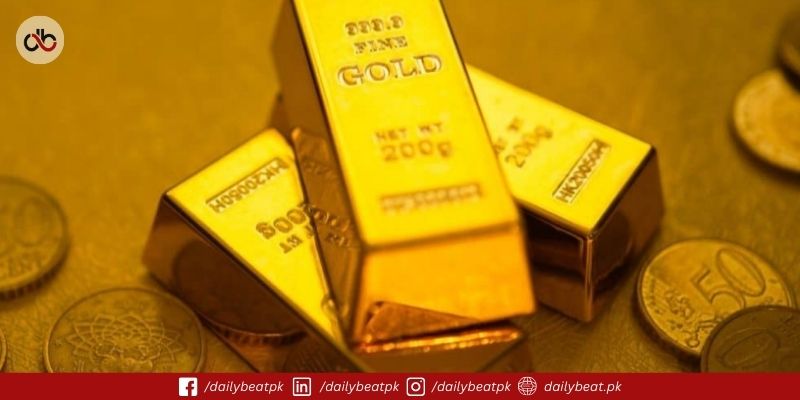Gold prices edge higher at the start of the week, driven by growing fears around U.S. trade policies and global conflicts. Investors are turning to gold as a safe-haven asset amid economic uncertainty. The latest rise comes after former U.S. President Donald Trump announced new tariffs on major trade partners, including Mexico, the European Union, Japan, and South Korea.
On Monday, spot gold rose by 0.2% to $3,361.42 per ounce. Gold futures were also up by 0.3%, trading at $3,374.80. This movement marks a continuation of gold’s steady rise in recent sessions.
Trump’s announcement of a 30% tariff on imports from Mexico and the EU sparked concern across financial markets. These tariffs are set to take effect on August 1. Markets are also reacting to previous tariff plans from Trump, including a 25% duty on Japanese and South Korean goods and a 50% tariff on Brazilian products and copper.
The aggressive trade stance is raising concerns about a slowdown in global trade. In response, many investors are seeking safety in gold. This is a key reason why gold prices edge higher during such uncertain times.
Geopolitical tensions are also adding to market caution. A report on Sunday revealed that Trump plans to send offensive weapons to Ukraine. This could escalate the already tense situation with Russia. Any worsening of the Russia-Ukraine conflict tends to support demand for safe-haven assets like gold.
Despite the upward momentum, gains in gold are somewhat limited due to a strong U.S. dollar. The dollar gained 0.1% in Asian trade ahead of the release of key U.S. inflation data. The consumer price index (CPI) report for June is expected to provide more clues about future interest rate policies.
Silver, meanwhile, outperformed gold. Futures jumped by 1.4%, reaching $39.49 per ounce, their highest level since 2011. Platinum prices dipped slightly, while copper saw mixed results in global and U.S. markets.
In today’s session, traders are closely watching economic data for further insight into inflation trends. The “gold analysis today” points to a cautious but upward trend, with traders reacting to both political and economic signals.
Looking ahead, investors are asking: “Will the gold rate decrease in the coming days?”
The answer largely depends on future trade decisions by the U.S. and how global tensions evolve. If tariffs continue to rise and geopolitical risks remain high, gold could stay strong. However, a stronger dollar or easing global tensions may apply downward pressure.
As part of the broader gold rate prediction, experts suggest gold may maintain its gains in the short term. However, a cooling in inflation or a resolution in trade conflicts could change that outlook.
For now, gold prices edge higher as uncertainty rules the market, a trend that may continue as global events unfold.















